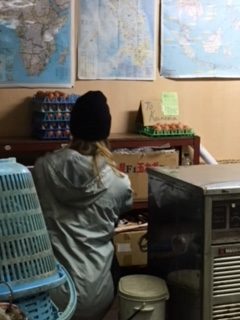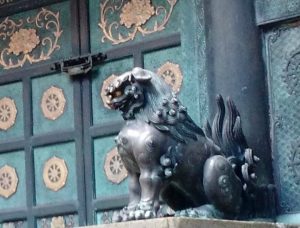The day after landing in Tokyo, we assembled into groups designed to focus on different types of Japanese food. Before venturing out into the wilderness of Japanese grocery stores, massive department stores, and strip malls, Professor Tegtmeyer-Pak posed us the question: what is good food? After we reassembled, our class brainstormed answers. Good food could be determined by packaging, advertising, taste, and several other similar characteristics. Those answers seemed fulfilling in the hustle and bustle of Tokyo, but after our first full day at the Asian Rural Institute, good food should have a much stricter code.
ARI produces most of its own food, and is a self-sustaining organic farm. We followed Osamu-san as he introduced the factors at work in the ARI fields. Osamu-san drilled home the point that ARI is free of pesticides, herbicides, and chemical fertilizers. He demonstrated how ARI makes biochar to add to their soil. The practice of making biochar is ages old and remains a chemical-free way to supplement soil for crops. The growing and care of healthy, organic crops is important to ARI, and so is their dedication to creating good food.
As a class, we sat down to hear about the curriculum of ARI from Yukiko-san. She brought up farming practices she had seen firsthand in other parts of the world: of loading fertilizer for crops with chemicals that would be ingested by locals; and the dumping of chemicals into bodies of water to collect multitudes of dead fish, which resulted in the death of locals. Good food shouldn’t be linked to the packaging and presentation, but where the food comes from and how it is grown.
At breakfast, the head cook said the food was fresh, and we would certainly be able to taste it. That is good food at ARI; the knowledge of how the food came to be, and the care and work put into growing it for consumption.

Pictures:
The featured picture shows the carrots gathered by classmates, washed and ready to bring in to sell or to be used to make carrot juice.
The picture to the left has the eggs to send to Tokyo to sell in blue cartons, and for ARI kitchen in green cartons. All are freshly plucked from the coop and rinsed by myself and classmates.

